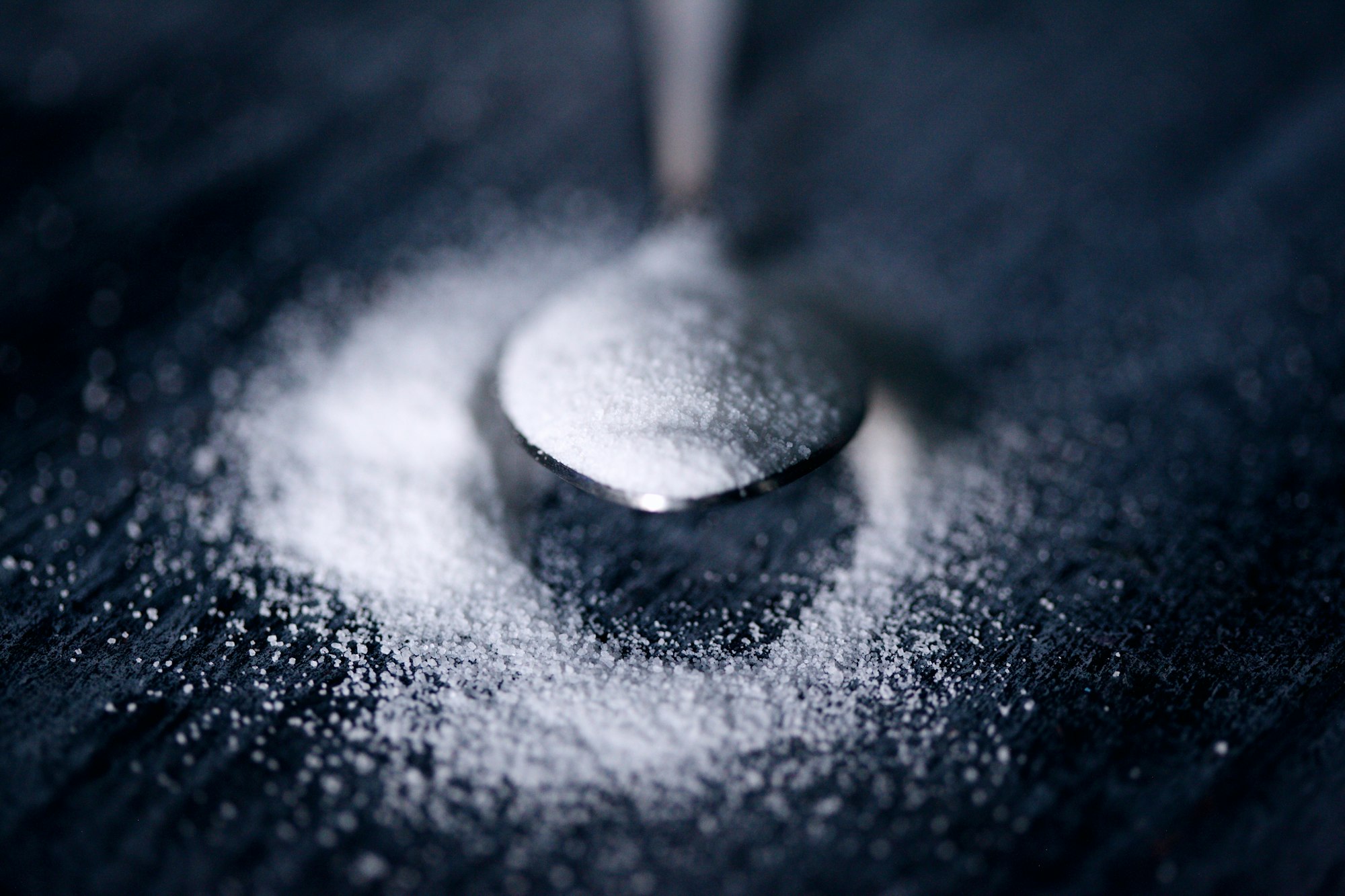Diabetes Simplified
Type-2 diabetes is a debilitating, life-changing, and often preventable disease that affects the lives of millions of people worldwide. It increases the risk of death from seemingly all diseases including cardiovascular disease, cancer, and COVID-19.

Type-2 diabetes is a debilitating, life-changing, and often preventable disease that affects the lives of millions of people worldwide. It increases the risk of death from seemingly all diseases including cardiovascular disease, cancer, and COVID-19. In this post, I will give an introductory level breakdown of the pathophysiology of type-2 diabetes mellitus (T2DM), its effects, and most importantly, how it can be prevented. This will not be comprehensive and this post is primarily meant to present you with a simplified version of what's going on.
Physiology: Let's start with how things should be working in your body. Insulin, an anabolic hormone that is secreted by the pancreas, is principally responsible for glucose (sugar) regulation. However, as part of a feedback loop, insulin itself is regulated by the amount of glucose available in your blood, meaning that its secretion is typically increased following a meal. In a non-diabetic, insulin facilitates the uptake of glucose into cells throughout the body. Once the glucose is taken in it can be stored as glycogen (a large complex of glucose molecules), used for energy, or converted to something else. For example, as I sit in my chair at this coffee shop, the sugar from my pastry has been absorbed through my GI (gastrointestinal) tract, entered my bloodstream, evoked an insulin release from the beta-cells of my pancreas, and has been taken up by GLUT4 (glucose transporter type 4) receptors on my adipose and muscle cells. This is the process of weight gain, which is really just energy storage. Glucose is not alone in its role as an insulin regulator. It has many colleagues including glucagon-like peptide (GLP-1), gastrointestinal inhibitory peptide (GIP), gastrin, and secretin to name a few.
On the other side of the spectrum is glucagon, a catabolic hormone. Glucagon takes action when the level of glucose in your blood is low and is also produced by the pancreas (this time by alpha cells). It works by binding to hepatocytes (liver cells) which causes the liver to break down stored glycogen and release it as glucose into the bloodstream. This morning I went on a 10-mile run, which took me a little under 90 minutes. During this time, my cells were depleted of their glucose, and glucagon was released from the alpha cells of my pancreas. In response, my liver started to secrete glucose for my cells to use which prevented me (for the time being) from "bonking", which means to "hit a wall" or run out of energy. This is the process behind the rationale for "carb-loading" before an athletic event. The more glycogen you can store in your liver for release later during activity, the better (in theory). Admittedly, it's really an excuse to eat more pasta.

Hopefully you can imagine some use cases for glucagon and insulin. For instance, if you're running away from a mountain lion, then glucagon will be vitally important in making sure you don't run out of energy (not the best example because you likely wouldn't last long enough to utilize the hormone). On the other hand, if you're sitting on the couch eating sour cream and onion chips while watching your favorite television show, insulin will be responsible for taking that glucose and storing it as glycogen for future use (when you eventually come across that mountain lion). It will also be stored as fat in case you find yourself stranded on an island without any food.
Pathology: Type-2 diabetes mellitus, known simply as "diabetes", is a metabolic disease associated with hyperglycemia (high blood sugar), lack of insulin sensitivity (insulin no longer evokes a natural response), weight gain, and a myriad of microvascular (small vessels) and macrovascular (large vessels) disorders. T2DM is far more common than type-1 diabetes, which is not a problem of insulin sensitivity, but rather insulin production in general.
As I point out in my post on the carnivore diet, having too much energy in your bloodstream is a bad thing, whether that energy is glucose or triglycerides (fat). This becomes a serious problem in diabetes since the insulin released from the beta cells of the pancreas does not generate the correct physiological response and therefore glucose gets trapped in the blood. Outside of sensitivity, insulin secretion from the pancreas can also be limited in T2DM through beta cell depletion and loss of function. As glucose levels rise, the risk of experiencing serious consequences from run-away hyperglycemia increases both acutely and chronically. Some of the most common signs of diabetes are increased thirst, urination, and hunger. One of the more acute dangers of hyperglycemia is diabetic ketoacidosis (DKA), which is very serious and can require hospitalization, fluid resuscitation, insulin, and often times potassium and sodium bicarbonate supplementation. DKA, more commonly associated with type 1 diabetes, often presents with symptoms of confusion, fatigue, fruity-smelling breath, abdominal pain, and dry mouth. The underlying causes of DKA are hyperglycemia, dehydration, lipolysis (breakdown of fat), increased free fatty acids and ketones (as a result of lipolysis), and metabolic acidosis (as a result of the increased ketones).
Chronically, hyperglycemia leads to microvascular complications including retinopathy (damage to vessels in the eye which can lead to vision loss), nephropathy (kidney damage: the reason many diabetics end up with end-stage renal damage [ESRD] and ultimately on dialysis), and neuropathy (dysfunction of the peripheral nerves which causes pain, tingling, and numbness). Then there are macrovascular complications, which are often deadly and include coronary artery disease (CAD), cerebral vascular disease (CVD), and peripheral vascular disease (PVD). In other words, diabetes causes heart attack, stroke, pulmonary embolism, nerve pain, blindness, kidney failure, ulcers (which lead to osteomyelitis [bone infections]), amputations, chronic infections, and chronic fatigue.

Prevention: So how do we prevent diabetes? Well, maybe we should start with why we should prevent diabetes. If health, longevity, and lack of suffering don't do it for you, let's pull out the big guns. Money. Regardless of the source, you'll find that diabetes costs hundreds of billions of dollars to treat annually in the United States alone. Not even Jeff Bezos could cover the cost of this disease for a whole year. So, if you consider yourself to be quite the economist, this should be high on your priorities list.
As I've said, this mostly preventable disease is a consequence of lifestyle. There's no getting around the fact that in the overwhelming majority of cases diabetes is a result of poor choices. It's just the truth. Of course, there are examples where there was no choice involved at all. Have you ever seen a child with T2DM? It's heartbreaking. All of this is worsened by lack of education, poor circumstance, and a myriad of other variables which have led to some egregious disparities. But in the end, it still comes down to choice, regardless of what led to those choices being made. It's extremely difficult to motivate people towards positive change, especially when they've become accustomed to a certain lifestyle, but I believe it to be the responsibility of healthcare providers, parents, teachers, and society at large to lead by example, educate, and start to turn this thing around. When you see someone in the hospital missing a leg or on dialysis, you start to ask yourself what could have been done differently to prevent that outcome. Obviously, there's only so much you can do! Even with all of the intervention and education in the world, there will still be people that go down this path. Life isn't a place of equal outcome, but it should be a place of equal opportunity, especially when it comes to preventing pain and suffering. With all this in mind, the first step in diabetes prevention is to get the word out and inform people. We have to educate.

What actions can be taken individually to prevent diabetes? Diet and exercise. For most people, that's literally all it takes to never have T2DM, and there's nothing preventing them from doing these things. Short on money? Feel like all you can afford is unhealthy food? First off, you can eat well on a budget. Grocery stores practically throw bananas at you they're so cheap. Chicken breast can be found for less than 2 dollars per pound! That's cheaper than McDonald's. If you wanted to have an incredibly clean meal of chicken, broccoli, and rice, I can almost guarantee that meal would cost less than what you eat normally. Just go check how much a 5lbs bag of brown rice costs at Walmart. Better yet, the cost of calories per pound is also way less. Avoid fast food and all the processed foods packed with sugar. Shop the outer walls at the grocery store where you'll find fruits, vegetables, and proteins. Avoid the inner aisles with the chips, cereal, and pop tarts. Don't even look down 'em. If you want to enjoy a donut, then do so sparingly! These treats are meant to be just that, treats. Not something that's taken in daily. Also, avoid drinking calories. Soda and coffee treats taste great, but the amount of sugar in one serving is ridiculous! Many people have all but forgotten what a refreshing glass of water tastes like. Again, I'm not saying to avoid these things completely and never enjoy unhealthy food. Just do so sparingly and recognize if you have a problem. How do you do that? You can self-assess with a mirror and a scale, which is pretty easy. You can also get tests done at your doctor's office which will assess how well you are able to regulate glucose.

Exercise goes hand in hand with diet. You often hear that 150 minutes of exercise a week is all that's required to stay healthy. In fact, that's the recommendation you'll find on the American Diabetes Association's patient-facing website. I think that's probably too simple of a recommendation. Personally, I recommend that you take a critical look at how much you are eating. 150 minutes of exercise can still lead to incredible weight gain if calorie consumption is too high. It's extremely difficult to out-train a bad diet. I would venture to guess that 150 minutes per week of exercise is not enough to prevent weight gain for most individuals on the standard American diet (SAD). On the other hand, if you are eating well, then 150 minutes of exercise per week is probably more than enough!
If you're wondering what kind of exercise to do, there are incredible benefits to both weight-bearing exercise and endurance training. Both are known to increase longevity and prevent a number of disease states down the line. Try setting goals like being able to run a certain distance or squat a certain weight. Adjust the difficulty of the goal based on your starting point. If you can't run, focus on walking or jogging. If you can't carry weight, then try some pool-based exercises to lighten the load. Make sure these goals are both difficult and attainable. Stay consistent, practice some discipline, and watch as your body transforms to meet the needs of your motivated mindset! You can feel confident that through these actions you are preventing future suffering, lengthening your health span, and setting yourself up to help others. These are the types of lifestyle changes that, when shared and practiced, can put a stop to this pandemic of metabolic disease.

